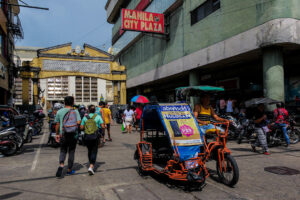THE PHILIPPINES is still classified as a lower middle-income country after just missing the threshold to achieve upper middle-income country (UMIC) status, according to the World Bank.
The World Bank’s latest country income classification showed the Philippines posted a record gross national income (GNI) per capita of $4,470. This was higher than its GNI per capita of $4,230 in the previous year.
Despite the increase in GNI per capita, the Philippines remains classified by the World Bank as a lower middle-income country — one with a GNI per capita of $1,136 to $4,495.
The Philippines’ GNI per capita was only $26 shy of the World Bank’s lower GNI per capita requirement of $4,496-$13,935 to become a UMIC. Last year, the GNI per capita requirement for a UMIC was between $4,516 and $14,005.
The World Bank computes a country’s GNI through the Atlas method, which serves as the basis of its income classifications — low, lower middle, upper middle and high. GNI refers to the total amount of money earned by its residents both inside and outside its borders.
In Southeast Asia, Vietnam overtook the Philippines in terms of GNI per capita with $4,490 but remained a lower middle-income country.
Cambodia ($2,520), Laos ($2,000), and Myanmar ($1,220) are also still classified as lower middle-income countries.
Meanwhile, Malaysia ($11,670), Thailand ($7,120) and Indonesia ($4,910) remained as upper middle-income countries.
Singapore ($74,750) and Brunei ($36,150) are still considered as high-income countries.
Other notable country movements include Costa Rica which is now classified as a high-income country; and Cabo Verde and Samoa, which both moved up to the UMIC category.
The World Bank updates country classifications by income level on July 1 every year, based on the GNI per capita of the previous calendar year.
Department of Economy, Planning, and Development Secretary Arsenio M. Balisacan in April said the country is still on track to meet its target of moving to the upper middle-income category by 2026.
However, World Bank lead economist for Brunei, Malaysia, the Philippines and Thailand Gonzalo J. Varela has said the country’s transition to UMIC status will likely take a bit longer.
“Getting there with an economy that’s growing a little bit slower than we thought about six months ago will take a little bit longer. So, we are thinking that a probable outcome is that it happens around 2027,” Mr. Varela said at a briefing on June 19.
The World Bank expects the Philippines to grow by 5.3% this year, below the government’s recently revised 5.5% to 6.5% target.
Analysts said the Philippines is unlikely to move to the UMIC category by 2027.
“I’m doubtful we could. Much work needs to be done to improve our competitiveness ranking to attract more investments,” Ateneo Center for Economic Research and Development Director Ser Percival K. Peña-Reyes told BusinessWorld in a Viber message.
The Philippines inched up a spot to 51st in the 2025 World Competitiveness Yearbook of the International Institute for Management Development. It remained a laggard in the region, ranking 13th out of 14 Asia-Pacific economies in the index.
Meanwhile, John Paolo R. Rivera, a senior research fellow at the Philippine Institute for Development Studies, said it is possible for the Philippines to become an upper middle-income country by 2027, but this would “require stronger, more inclusive and sustained economic growth.”
Mr. Rivera said the government would have to ramp up infrastructure rollout and boost productivity in agriculture and manufacturing.
“Falling short of the UMIC threshold despite a lower benchmark highlights how structural challenges and global headwinds continue to weigh on the Philippines’ income trajectory,” Mr. Rivera said.
He also cited slower-than-expected growth, peso depreciation, and inflation pressures as factors that have hurt the country’s per capita GNI. — Aubrey Rose A. Inosante
